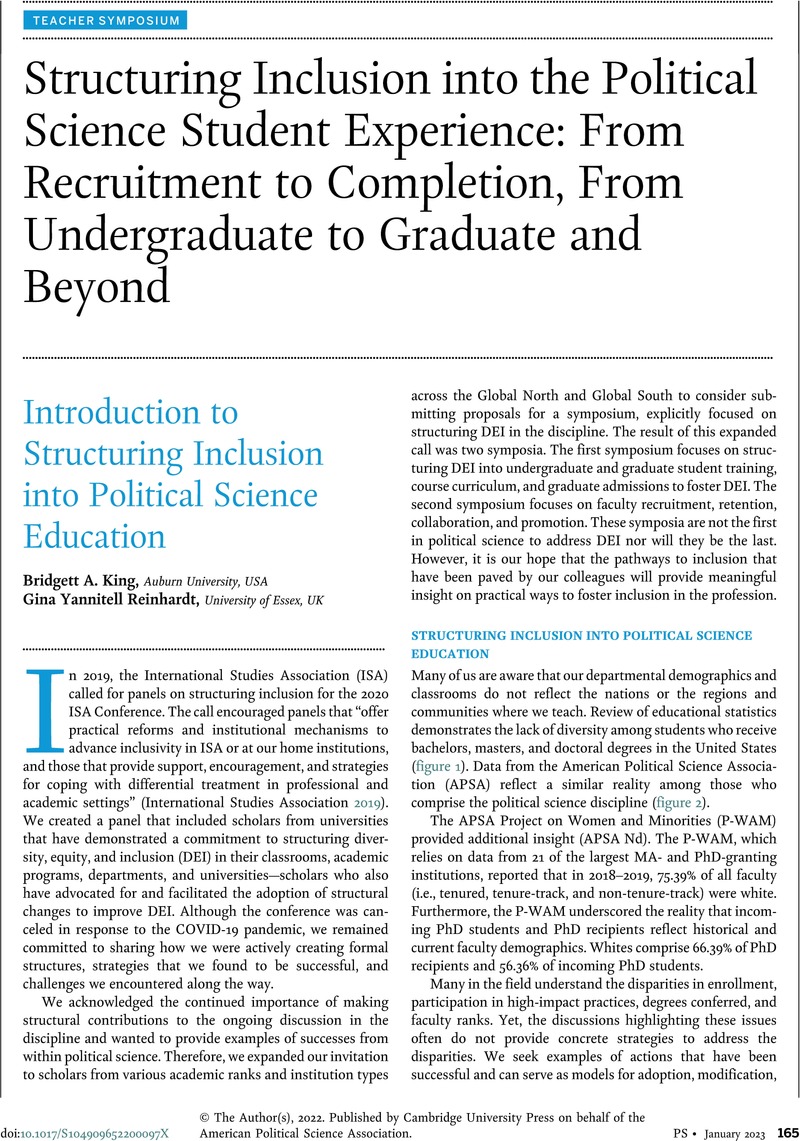No CrossRef data available.
Article contents
Introduction to Structuring Inclusion into Political Science Education
Published online by Cambridge University Press: 29 August 2022
Abstract
An abstract is not available for this content so a preview has been provided. Please use the Get access link above for information on how to access this content.

- Type
- Structuring Inclusion into the Political Science Student Experience: From Recruitment to Completion, From Undergraduate to Graduate and Beyond
- Information
- Copyright
- © The Author(s), 2022. Published by Cambridge University Press on behalf of the American Political Science Association
References
REFERENCES
American Political Science Association. 2020. “All Membership Demographic Profile: Race/Ethnicity.” https://apsanet.org/resources/data-on-the-profession/dashboard/membership.Google Scholar
American Political Science Association. Nd. “Project on Women and Minorities: Demographics over Time.” https://apsanet.org/resources/data-on-the-profession/dashboards/p-wam.Google Scholar
International Studies Association. 2019. “Structuring Inclusion Panels.” www.isanet.org/Conferences/Special-Convention-Programs/Structuring-Inclusion.Google Scholar
Michel, Rochelle S., Belur, Vinetha, Naemi, Bobby, and Kell, Harrison J.. 2019. “Graduate Admissions Practices: A Targeted Review of the Literature.” ETS Research Report Series 2019: 1–18. https://doi.org/10.1002/ets2.12271.CrossRefGoogle Scholar
Shaw, Todd. 2021. “Building an Inclusive Syllabus: An APSA Teaching & Learning Webinar.” American Political Science Association online webinar, October 20. https://politicalsciencenow.com/building-an-inclusive-syllabus-an-apsa-teaching-learning-webinar.Google Scholar
Sinclair-Chapman, Valeria. 2017. “Leveraging Diversity in Political Science for Institutional and Disciplinary Change.” PS: Political Science & Politics 48 (3): 454–58.Google Scholar


